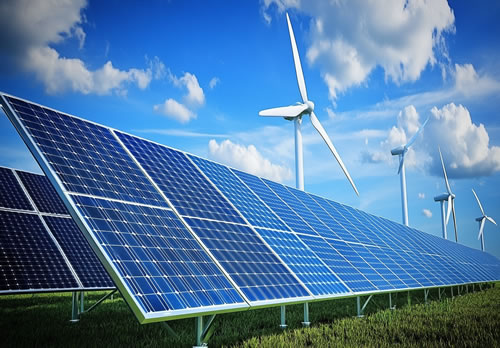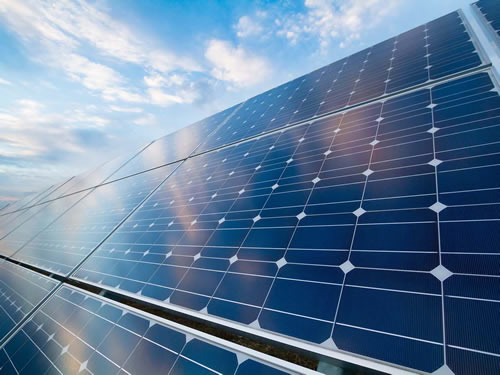Solar photovoltaic (PV) technology has emerged as a pivotal renewable energy source in the 21st century, offering a sustainable alternative to fossil fuels. Below is an analysis of its key advantages and disadvantages.
Advantages of Solar PV
Renewable and Sustainable
Solar energy is inexhaustible, relying on sunlight—abundant and free. Unlike coal or natural gas, it does not deplete finite resources or emit greenhouse gases, making it critical for combating climate change.Reduced Energy Bills
PV systems generate electricity onsite, reducing reliance on grid power. Homeowners and businesses often see significant savings on electricity bills, especially in regions with high solar irradiance.Low Operating Costs
Once installed, solar panels require minimal maintenance (e.g., occasional cleaning). They operate silently and have no moving parts, minimizing long-term operational expenses.Energy Independence
Solar PV empowers individuals, communities, and nations to reduce dependence on imported fuels, enhancing energy security and resilience.Scalability and Flexibility
Systems range from rooftop installations to large-scale solar farms. They can be integrated into buildings (BIPV) or deployed in remote areas without grid access.Job Creation and Economic Growth
The solar industry fosters employment in manufacturing, installation, and maintenance, driving economic development globally.
Disadvantages of Solar PV
Intermittency
Solar power generation depends on sunlight, fluctuating with weather conditions, time of day, and seasons. This variability necessitates storage solutions (e.g., batteries) or backup systems.High Initial Investment
While costs have declined significantly (~80% since 2010), installing a PV system still requires substantial upfront capital. However, long-term savings often offset this expense.Space Requirements
Large-scale solar farms need vast land areas, potentially conflicting with agriculture, conservation, or urban planning. Rooftop systems mitigate this but may not suffice for high-energy demands.Environmental Impact
Panel production involves toxic materials (e.g., lead, cadmium), and improper disposal poses recycling challenges. Land degradation and habitat disruption are risks for utility-scale projects.Efficiency Limitations
Most commercial panels convert ~15-22% of sunlight into electricity, though emerging technologies like perovskite cells aim to improve efficiency. Energy loss during transmission also occurs.Grid Integration Challenges
Variable output can strain grid stability if not managed properly. Utilities may require infrastructure upgrades to accommodate distributed solar generation.

 Jinko Solar 66HL4M-(V) 610W 615W 620W 630W 635W
Jinko Solar 66HL4M-(V) 610W 615W 620W 630W 635W Jinko Solar 78HL4-BDV Tiger Neo 625W-650W
Jinko Solar 78HL4-BDV Tiger Neo 625W-650W Jinko Solar 54HL4R-BDB Tiger Neo 425W-450W
Jinko Solar 54HL4R-BDB Tiger Neo 425W-450W  Jinko Solar 54HL4R-(V) Tiger Neo 435W-460W
Jinko Solar 54HL4R-(V) Tiger Neo 435W-460W LONGI HI-MOX6 LR7-72HTH 600W-620W
LONGI HI-MOX6 LR7-72HTH 600W-620W LONGI HI-MO7 LR5-72HGD 560W-590W
LONGI HI-MO7 LR5-72HGD 560W-590W LONGI HI-MO7 LR5-72HGD 585W-620W
LONGI HI-MO7 LR5-72HGD 585W-620W Ja Solar JAM72D30/LB 580W 575W 570W 565W Double Glass Bifacial Solar Module Panel
Ja Solar JAM72D30/LB 580W 575W 570W 565W Double Glass Bifacial Solar Module Panel Ja Solar JAM72D30-555/LB 555W DEEPBLUE3.0 Solar Module Panel
Ja Solar JAM72D30-555/LB 555W DEEPBLUE3.0 Solar Module Panel Ja Solar JAM72D30-560/LB MBB Bifacial Mono PERC 560W Double Glass Solar Module
Ja Solar JAM72D30-560/LB MBB Bifacial Mono PERC 560W Double Glass Solar Module Trina Solar Tsm-De09.05 Vertex S 380W-400W
Trina Solar Tsm-De09.05 Vertex S 380W-400W Trina Solar Tsm-DE09C.07 Vertex S 380W-405W
Trina Solar Tsm-DE09C.07 Vertex S 380W-405W Trina Solar Tsm-DE09C.05 Vertex S 380W-405W
Trina Solar Tsm-DE09C.05 Vertex S 380W-405W Trina Solar Tsm-NEG09RC.05 400W-430W
Trina Solar Tsm-NEG09RC.05 400W-430W Canadian Solar 520W-550W Bifacial Mono Solar Panel
Canadian Solar 520W-550W Bifacial Mono Solar Panel Canadian Solar 695W Pallet of TOPcon Solar Panels
Canadian Solar 695W Pallet of TOPcon Solar Panels Canadian Solar 605W N-type Bifacial TOPCon Solar Panels
Canadian Solar 605W N-type Bifacial TOPCon Solar Panels Canadian Solar 450W 108 Cells TOPCon BoB Solar Panel
Canadian Solar 450W 108 Cells TOPCon BoB Solar Panel


